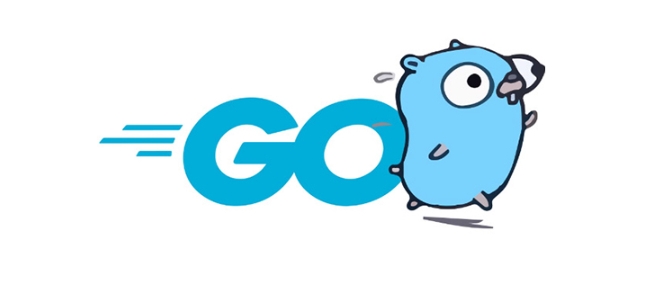To write a custom Go code linter, the key is to use Go toolchain and AST analysis to implement code specification checks. 1. Determine the inspection target, such as prohibiting specific function calls, field tag checking, naming methods or repeated string constants, and analyze the corresponding AST nodes based on this; 2. Use go/analysis to build a framework, define the Analyzer structure, and traverse the AST nodes in the run function, use inspect.Inspect and pass.Reportf to implement detection and reporting; 3. Write tests and local debugging, perform assertion verification through the testdata directory and analysistest package, and compile it into command-line tools for debugging and integration; 4. Integrate into the development process, add CI, support gopls, publish as modules, and may need to support the JSON output format so that the IDE can display error messages.

Writing a custom Go code linter is actually not mysterious. It essentially uses the capabilities already in the Go toolchain to implement your own code specification checks. As long as you understand Go's AST and some basic tools usage, you can get started quickly.

Let’s start from several practical perspectives and talk about how to write a linter that can run and be used step by step.
1. Determine your inspection target
Before you start, think clearly about what type of code problems you want to detect. for example:

- Is there a specific function that is prohibited to call (such as
fmt.Println) - Is there no tag added to some structure fields
- Is it a deprecated naming method?
- Whether there are duplicate string constants and other logical judgments
These questions determine which parts of the AST you need to analyze. For example, if you want to check whether a function is called, you need to pay attention to ast.CallExpr node; if it is a field tag, look at ast.StructType and the field Tag fields.
suggestion:

- Start small and do a simple rule verification process to run
- Don't pursue complex logic from the beginning, it's easy to get stuck in the debugging stage
2. Build the framework using go/analysis
Go officially provides a standard analysis framework golang.org/x/tools/go/analysis , which is the most recommended way to write linter.
You can refer to the working mode of go vet , encapsulate your check logic into an Analyzer , and then run it through the command line.
A typical Analyzer structure is as follows:
var Analysis = &analysis.Analyzer{
Name: "mylinter",
Doc: "check for something",
Run: run,
} Then process the AST of each file in the run function.
Key points:
- Use
inspect.Inspectto traverse AST nodes - Register
factto pass information across packages (if required) - Report problems using
pass.Reportf, which can bring location information and prompt text
3. Write tests and local debugging
It’s not enough to just finish writing, you have to verify whether your rules are in effect. A few things to do:
- Write a small testdata directory and put a few
.gofiles as test cases - Use
unitestanalysistestto make assertions (fromgolang.org/x/tools/go/analysis/analysistest)
For example:
func TestMyLinter(t *testing.T) {
testdata := analysistest.TestData()
analysistest.Run(t, testdata, myanalyzer.Analyzer, "a")
}This way you can automatically verify the effect after every modification.
Tips:
- During debugging, the entire Analyzer can be compiled into a binary command line tool and directly executed on the project
- Use
go installorgo runto load your linter, and use the-vettoolparameter to integrate into the IDE
4. Integrate into the development process
After writing it, it is necessary to integrate it to make it work:
- Join the CI process and run it automatically before submitting
- Support
goplsto allow your linter to report errors in real time in the editor - If you use it with multiple people in the team, it is best to publish it as a module or a private repo for easy installation and use
Notice:
- If you want the IDE to display errors, you may need to support
jsonoutput format - Some IDEs (such as VSCode) can enable your linter by configuring
"go.toolsEnvVars"
Basically that's it. Writing a custom linter is not difficult, the key is to understand AST and how to inject your checking logic. Don’t think about getting it in one step at first, run first.
The above is the detailed content of How to write a custom linter for Go code?. For more information, please follow other related articles on the PHP Chinese website!

Hot AI Tools

Undress AI Tool
Undress images for free

Undresser.AI Undress
AI-powered app for creating realistic nude photos

AI Clothes Remover
Online AI tool for removing clothes from photos.

Clothoff.io
AI clothes remover

Video Face Swap
Swap faces in any video effortlessly with our completely free AI face swap tool!

Hot Article

Hot Tools

Notepad++7.3.1
Easy-to-use and free code editor

SublimeText3 Chinese version
Chinese version, very easy to use

Zend Studio 13.0.1
Powerful PHP integrated development environment

Dreamweaver CS6
Visual web development tools

SublimeText3 Mac version
God-level code editing software (SublimeText3)
 Is golang frontend or backend
Jul 08, 2025 am 01:44 AM
Is golang frontend or backend
Jul 08, 2025 am 01:44 AM
Golang is mainly used for back-end development, but it can also play an indirect role in the front-end field. Its design goals focus on high-performance, concurrent processing and system-level programming, and are suitable for building back-end applications such as API servers, microservices, distributed systems, database operations and CLI tools. Although Golang is not the mainstream language for web front-end, it can be compiled into JavaScript through GopherJS, run on WebAssembly through TinyGo, or generate HTML pages with a template engine to participate in front-end development. However, modern front-end development still needs to rely on JavaScript/TypeScript and its ecosystem. Therefore, Golang is more suitable for the technology stack selection with high-performance backend as the core.
 How to build a GraphQL API in golang
Jul 08, 2025 am 01:03 AM
How to build a GraphQL API in golang
Jul 08, 2025 am 01:03 AM
To build a GraphQLAPI in Go, it is recommended to use the gqlgen library to improve development efficiency. 1. First select the appropriate library, such as gqlgen, which supports automatic code generation based on schema; 2. Then define GraphQLschema, describe the API structure and query portal, such as defining Post types and query methods; 3. Then initialize the project and generate basic code to implement business logic in resolver; 4. Finally, connect GraphQLhandler to HTTPserver and test the API through the built-in Playground. Notes include field naming specifications, error handling, performance optimization and security settings to ensure project maintenance
 How to install Go
Jul 09, 2025 am 02:37 AM
How to install Go
Jul 09, 2025 am 02:37 AM
The key to installing Go is to select the correct version, configure environment variables, and verify the installation. 1. Go to the official website to download the installation package of the corresponding system. Windows uses .msi files, macOS uses .pkg files, Linux uses .tar.gz files and unzip them to /usr/local directory; 2. Configure environment variables, edit ~/.bashrc or ~/.zshrc in Linux/macOS to add PATH and GOPATH, and Windows set PATH to Go in the system properties; 3. Use the government command to verify the installation, and run the test program hello.go to confirm that the compilation and execution are normal. PATH settings and loops throughout the process
 Go sync.WaitGroup example
Jul 09, 2025 am 01:48 AM
Go sync.WaitGroup example
Jul 09, 2025 am 01:48 AM
sync.WaitGroup is used to wait for a group of goroutines to complete the task. Its core is to work together through three methods: Add, Done, and Wait. 1.Add(n) Set the number of goroutines to wait; 2.Done() is called at the end of each goroutine, and the count is reduced by one; 3.Wait() blocks the main coroutine until all tasks are completed. When using it, please note: Add should be called outside the goroutine, avoid duplicate Wait, and be sure to ensure that Don is called. It is recommended to use it with defer. It is common in concurrent crawling of web pages, batch data processing and other scenarios, and can effectively control the concurrency process.
 Go for Audio/Video Processing
Jul 20, 2025 am 04:14 AM
Go for Audio/Video Processing
Jul 20, 2025 am 04:14 AM
The core of audio and video processing lies in understanding the basic process and optimization methods. 1. The basic process includes acquisition, encoding, transmission, decoding and playback, and each link has technical difficulties; 2. Common problems such as audio and video aberration, lag delay, sound noise, blurred picture, etc. can be solved through synchronous adjustment, coding optimization, noise reduction module, parameter adjustment, etc.; 3. It is recommended to use FFmpeg, OpenCV, WebRTC, GStreamer and other tools to achieve functions; 4. In terms of performance management, we should pay attention to hardware acceleration, reasonable setting of resolution frame rates, control concurrency and memory leakage problems. Mastering these key points will help improve development efficiency and user experience.
 Go embed package tutorial
Jul 09, 2025 am 02:46 AM
Go embed package tutorial
Jul 09, 2025 am 02:46 AM
Using Go's embed package can easily embed static resources into binary, suitable for web services to package HTML, CSS, pictures and other files. 1. Declare the embedded resource to add //go:embed comment before the variable, such as embedding a single file hello.txt; 2. It can be embedded in the entire directory such as static/*, and realize multi-file packaging through embed.FS; 3. It is recommended to switch the disk loading mode through buildtag or environment variables to improve efficiency; 4. Pay attention to path accuracy, file size limitations and read-only characteristics of embedded resources. Rational use of embed can simplify deployment and optimize project structure.
 How to build a web server in Go
Jul 15, 2025 am 03:05 AM
How to build a web server in Go
Jul 15, 2025 am 03:05 AM
It is not difficult to build a web server written in Go. The core lies in using the net/http package to implement basic services. 1. Use net/http to start the simplest server: register processing functions and listen to ports through a few lines of code; 2. Routing management: Use ServeMux to organize multiple interface paths for easy structured management; 3. Common practices: group routing by functional modules, and use third-party libraries to support complex matching; 4. Static file service: provide HTML, CSS and JS files through http.FileServer; 5. Performance and security: enable HTTPS, limit the size of the request body, and set timeout to improve security and performance. After mastering these key points, it will be easier to expand functionality.
 Go select with default case
Jul 14, 2025 am 02:54 AM
Go select with default case
Jul 14, 2025 am 02:54 AM
The purpose of select plus default is to allow select to perform default behavior when no other branches are ready to avoid program blocking. 1. When receiving data from the channel without blocking, if the channel is empty, it will directly enter the default branch; 2. In combination with time. After or ticker, try to send data regularly. If the channel is full, it will not block and skip; 3. Prevent deadlocks, avoid program stuck when uncertain whether the channel is closed; when using it, please note that the default branch will be executed immediately and cannot be abused, and default and case are mutually exclusive and will not be executed at the same time.






